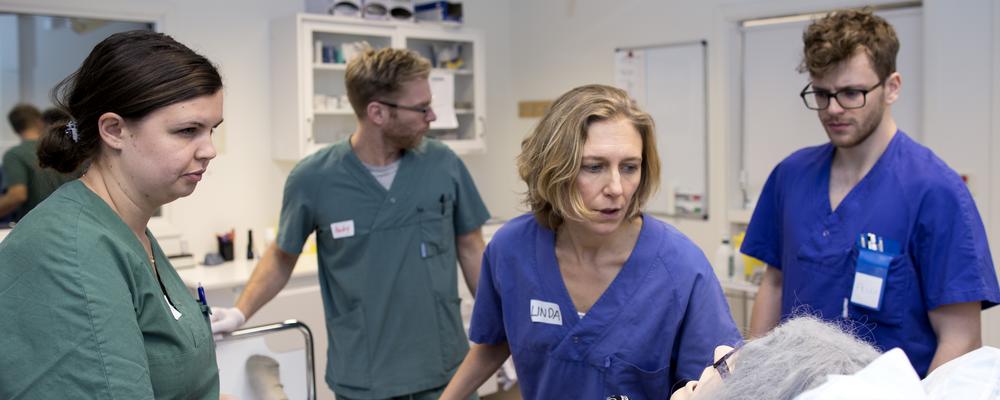“We are delighted that all the universities that applied for the right to award degrees for the new medical program have received it. On behalf of Sahlgrenska Academy, I would like to thank everyone who put so much work into developing the new medical program at the University of Gothenburg under the auspices of Medical Program Committee Chair Agneta Ekman,” says Silvana Naredi, vice dean for education.
“It has been especially enjoyable to do this in such close collaboration with Sahlgrenska University Hospital and Region Västra Götaland. There seems to be a great mutual interest on the part of both academia and health care professionals in making this program as good as it was hoped. A lot of thought has gone into the program, and I believe it will work very well.”
Clear progression
The new medical program is one semester longer than the old one. The courses in the semesters have been completely redesigned, and the progression throughout the program has been made clearer. The program will now be the basis for a medical license, which means that students will be able to work independently as a doctor after they have received their medical license from the National Board of Health and Welfare following graduation. To ensure that doctors who have recently graduated have all the theoretical and clinical skills required, a lot of focus has been placed on ensuring that the students reach the established learning objectives and that the examinations really show that the students have the right knowledge.
“Today’s announcement from the Swedish Higher Education Authority is very gratifying, but of course there is still a lot of concrete work to be done before the new medical program starts next autumn. During the next few years, the old and the new medical programs will also be given in parallel, placing demands on the teachers, who may have to give the same course twice during a semester because the new and old programs differ in terms of course order,” says Agneta Ekman.
A new model for clinical training
The new medical program places other demands on clinical training. The clinical courses run as a common thread throughout the program, starting in the first semester. Health care supervisors already consider the level of the students and the objectives the student needs to attain. But since the medical program is becoming the basis for a medical license, there are greater demands for clarity, for practical training opportunities and on the assessments that are made.
National collaboration
All universities that train doctors have jointly developed a Swedish version of the Entrustable Professional Activities (EPA) model, which originated in the Netherlands. At Sahlgrenska Academy, Anna Cederborg and Katarina Jood have participated in this effort.
“The model involves defining profession-specific activities that are part of a doctor’s daily work. In the national group, we have defined 10 such professional activities for Swedish medical education,” says Katarina Jood, an associate professor at Sahlgrenska Academy and chief physician in neurology at Sahlgrenska University Hospital. “As a doctor, you continue to learn throughout your career, and the model defines such things as the degree of independence that a newly qualified licensed doctor is to have attained to work immediately after graduation.”
